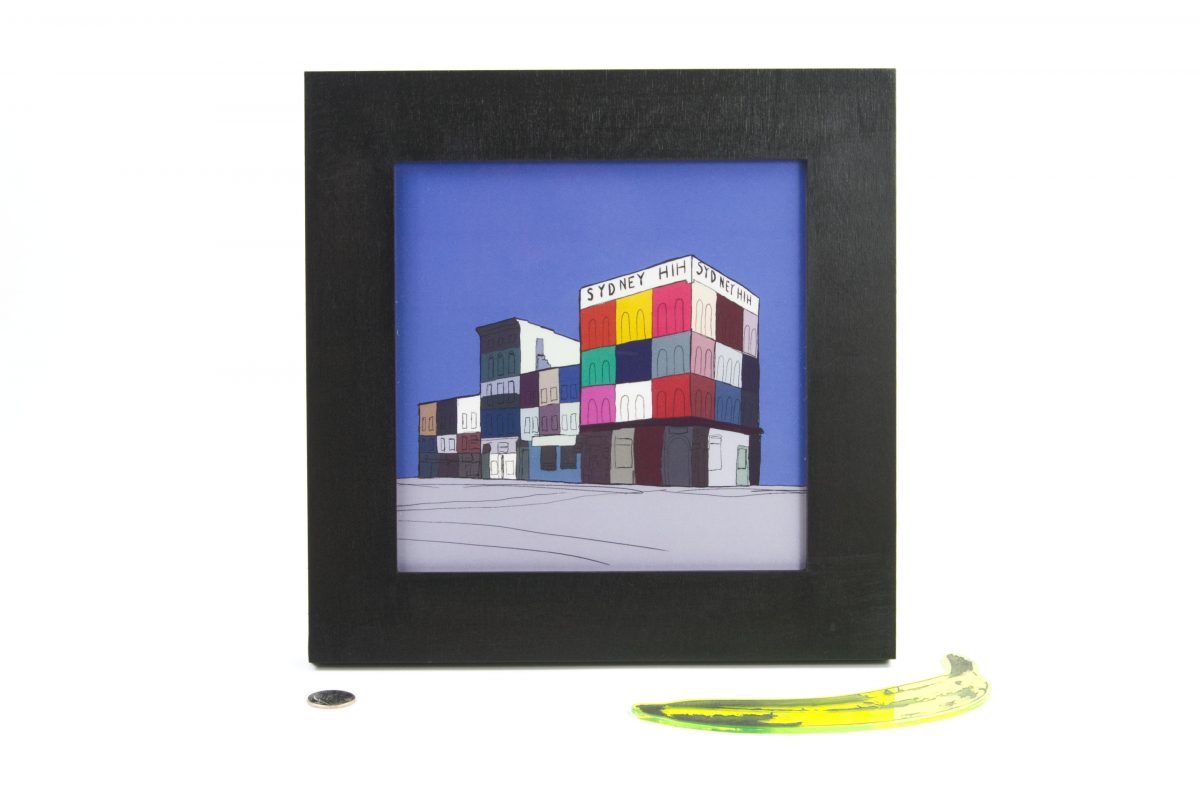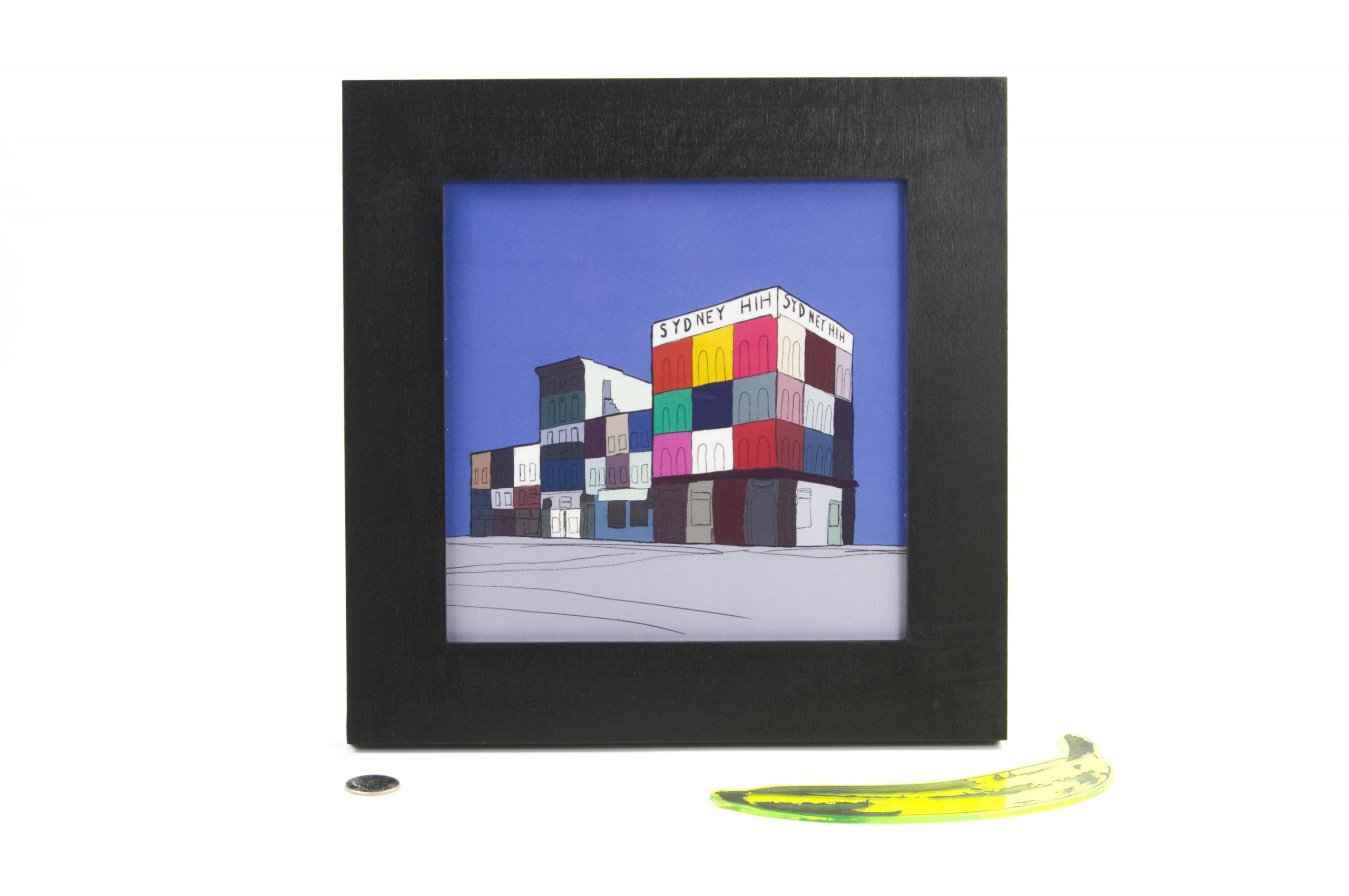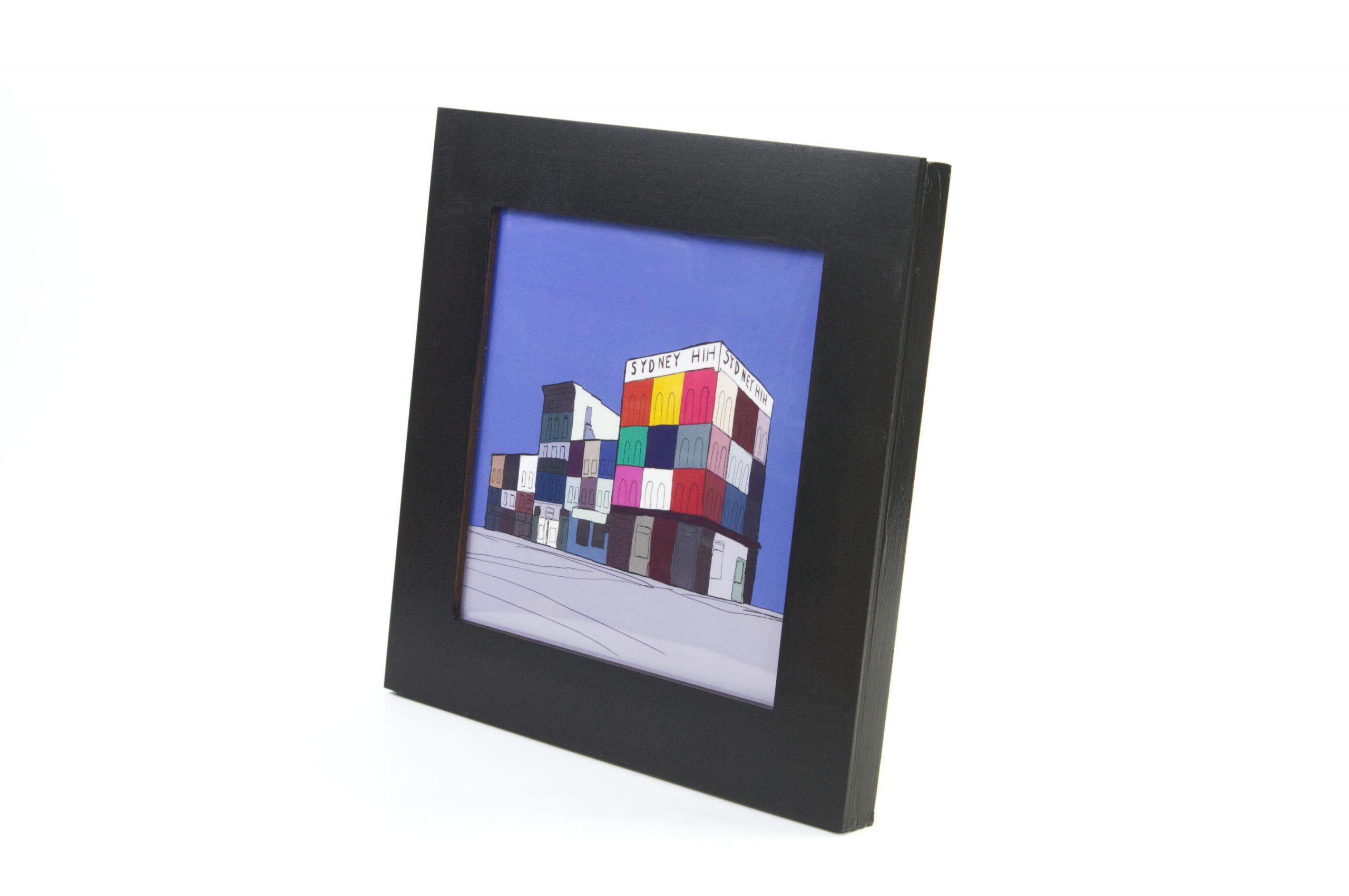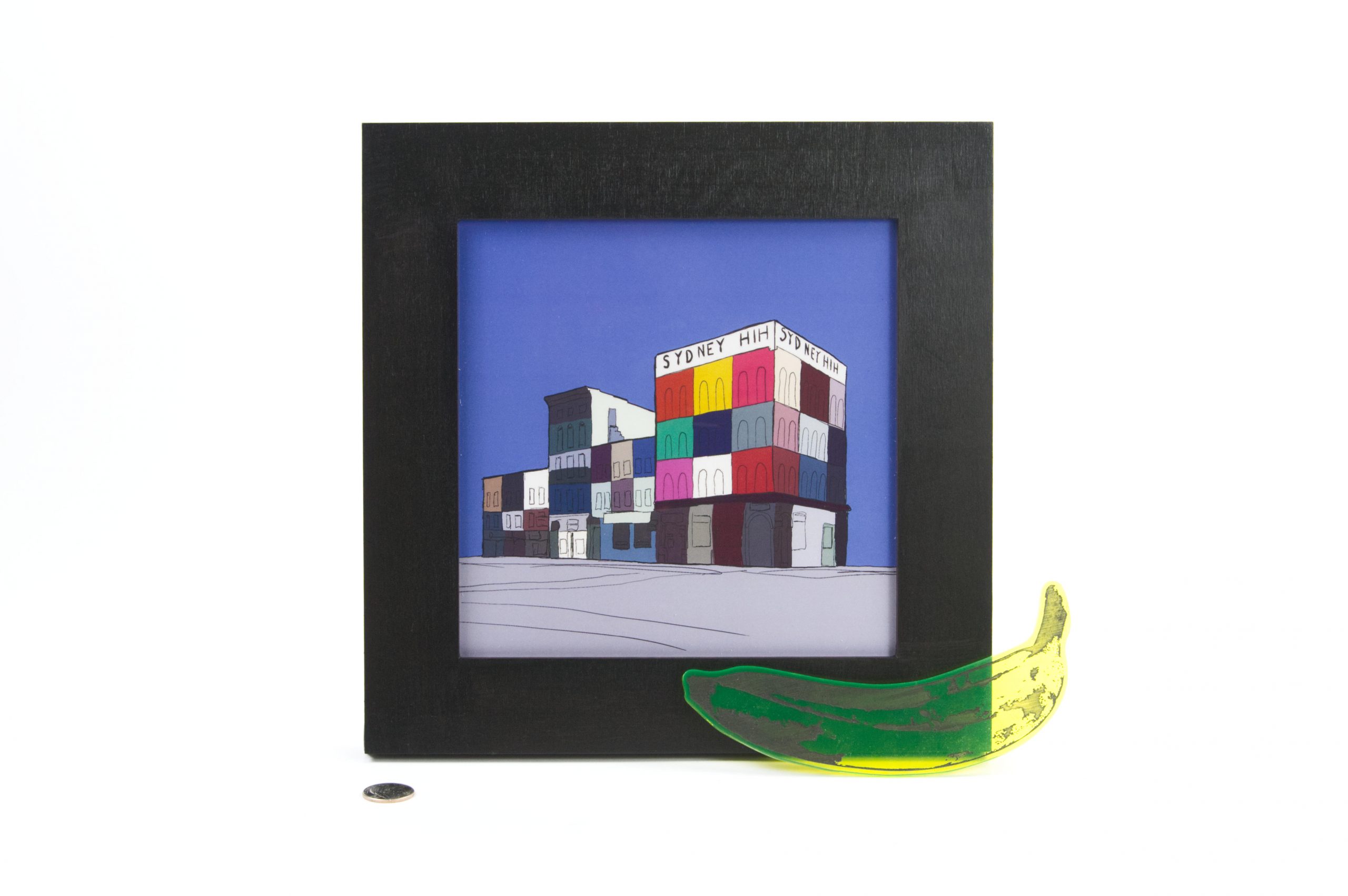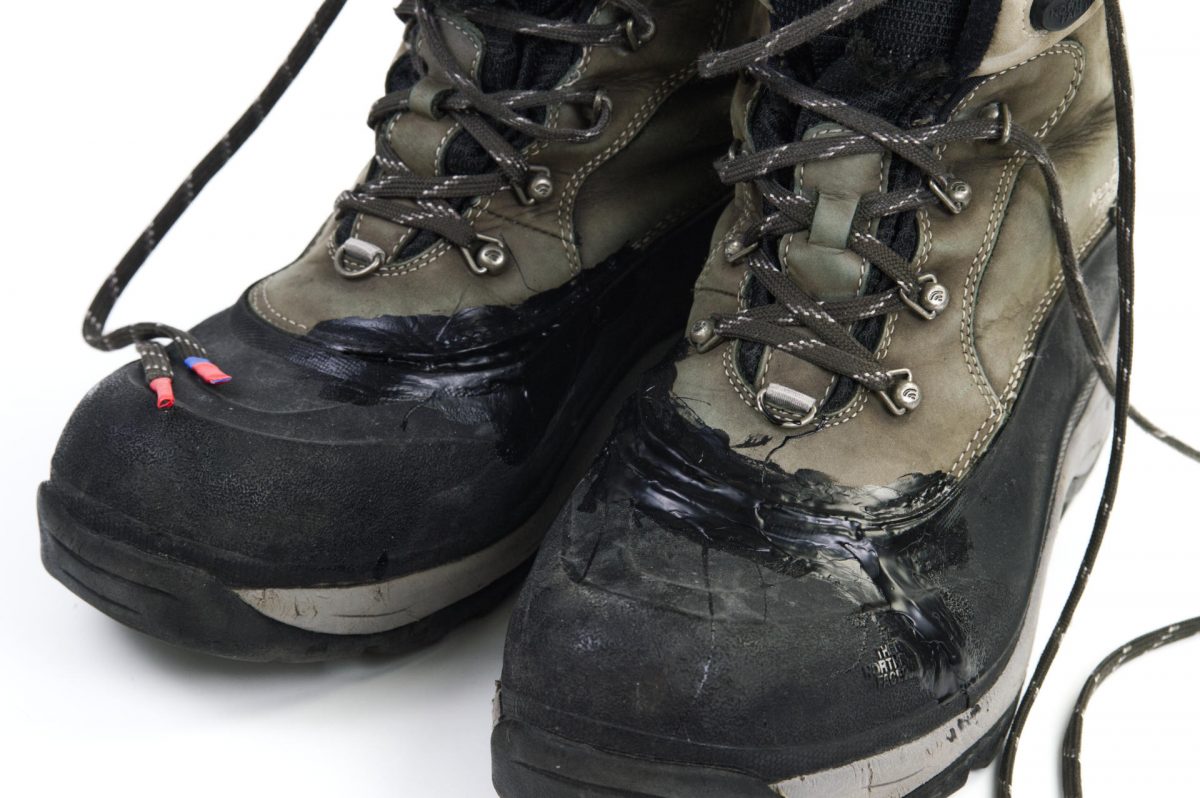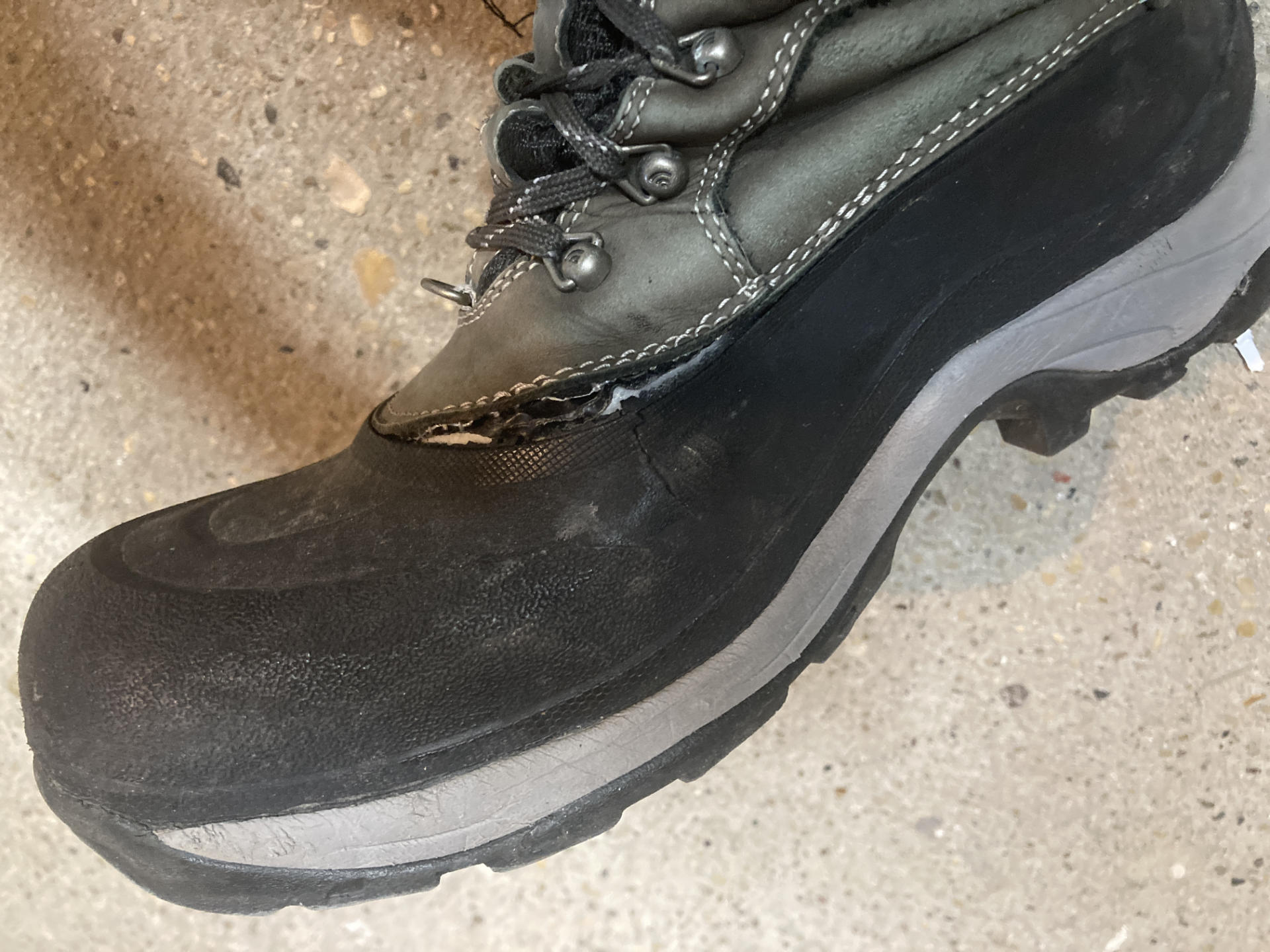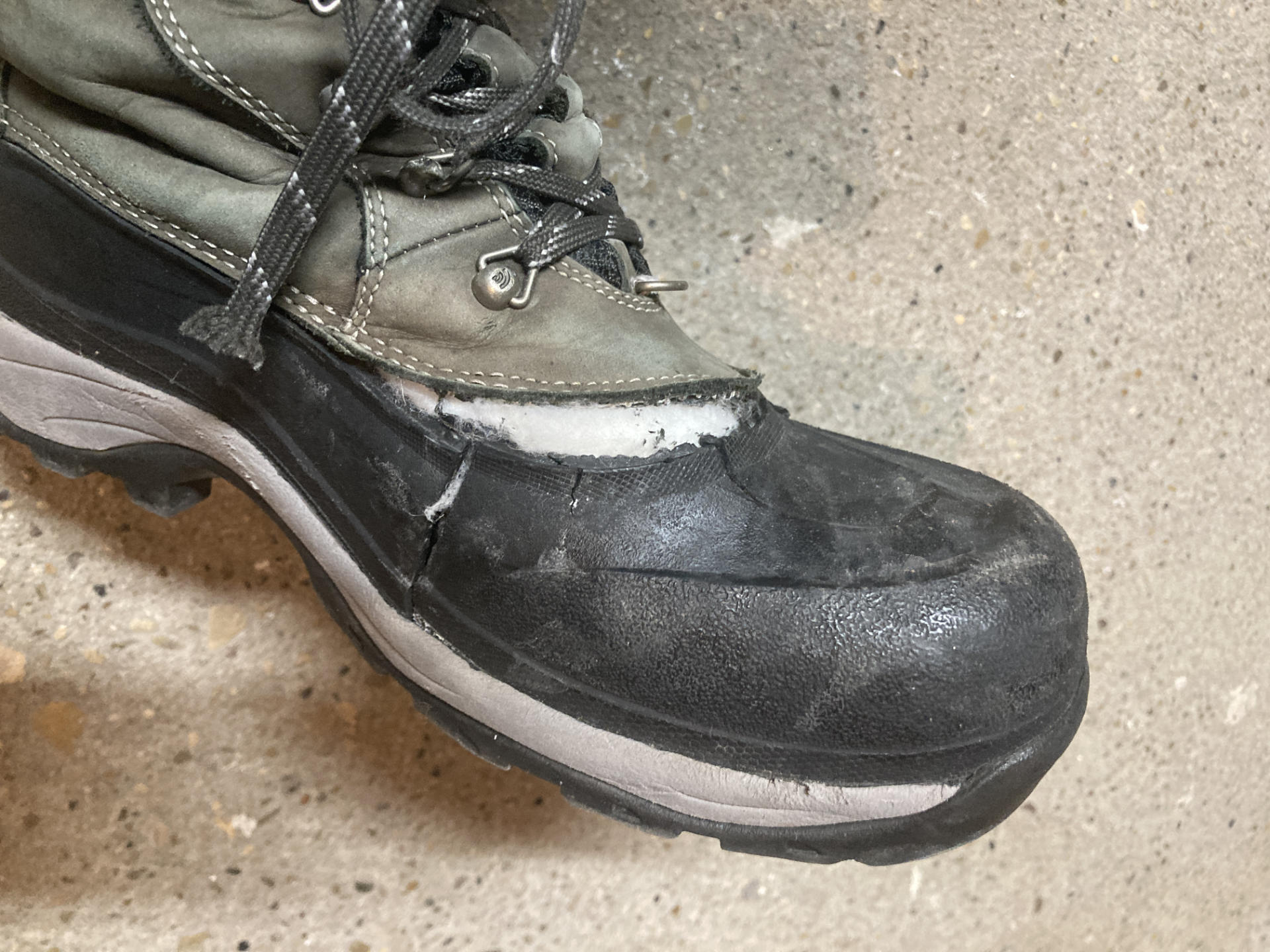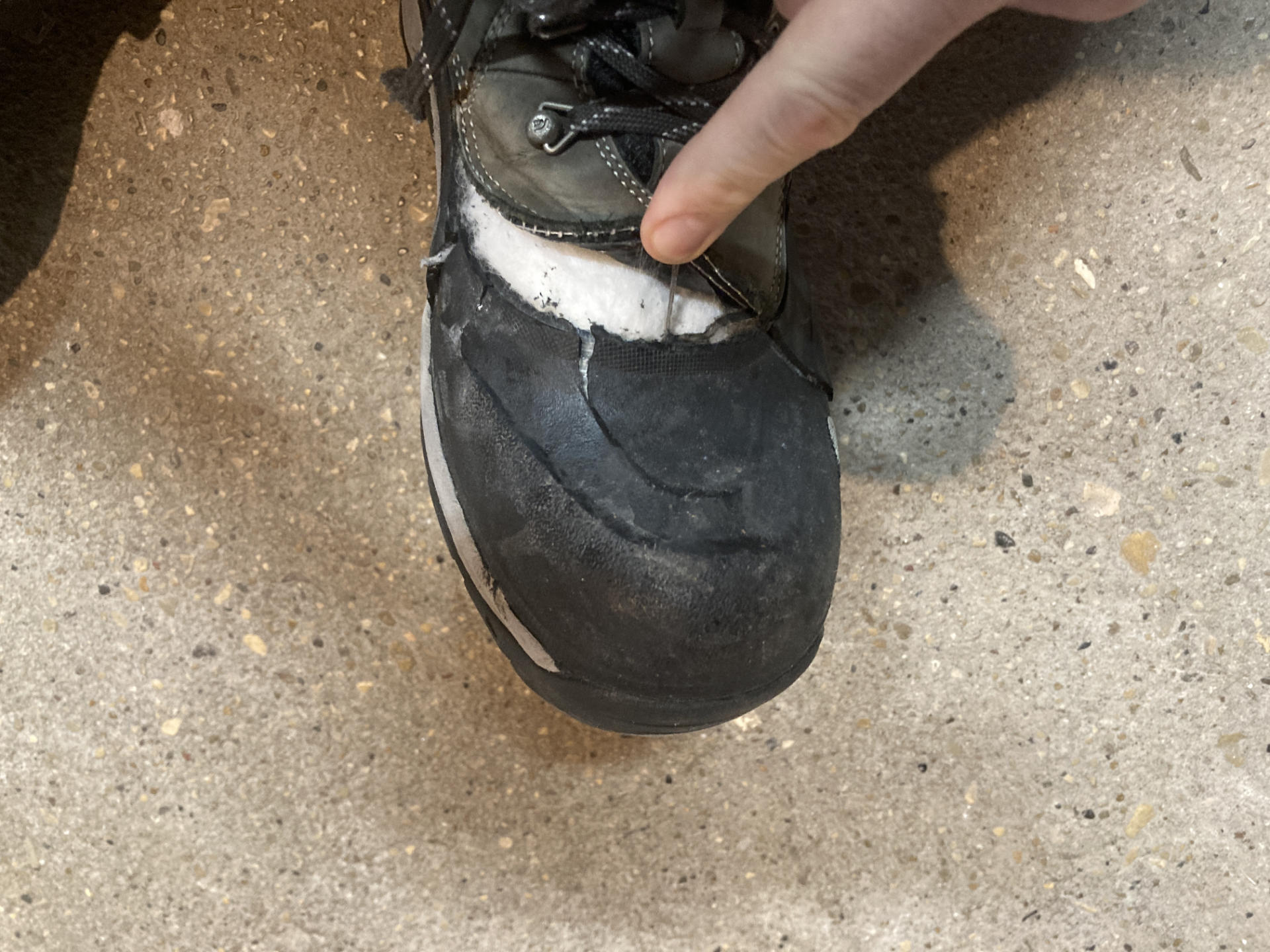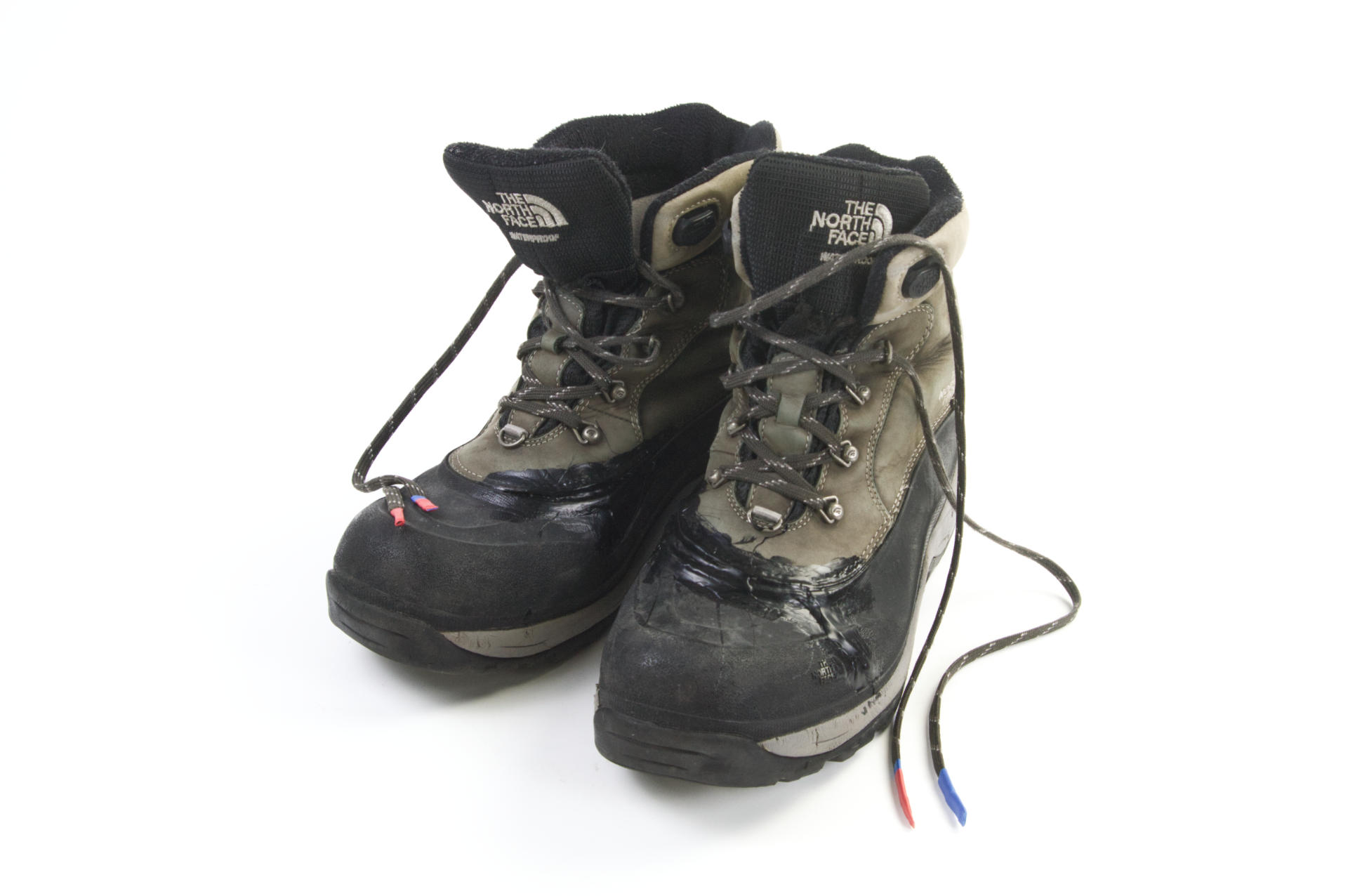One of my pieces for the 2025 WMSE Art & Music event is my illustration of the Sydney Hih building. If you didn’t live in Milwaukee around the 1980s/1990s and dive into the counter-cultural music scene you may not be familiar. Read about it at OnMilwaukee or Urban Milwaukee.
I always struggle with the edges of the 12″x12″ boards as they are just plywood and kind of rough, so this time I sanded them, filled the holes, sanded some more (and I hate sanding!) and then applied some black paint. It’s not perfect, but it’s better. I spent way too much time on the edges.
For the frame itself I laser cut a piece of 1/4″ Baltic Birch and stained it black, which I think looks really nice. I glued it down to the board but the frame was warped so the gluing process took a long time and all the clamps I have. Once it was finally glued down I painted the edges black (again) and added one more coat of black stain to the frame. I am mostly pleased with how it turned out but because it’s my own work I can see so many areas of improvement for next time. I’m sure no one else will see what I see.
Still, this process worked well enough that I did it for another board and yet another board that my daughter Madeline did.
Here’s a version of the digital illustration that I created with Procreate. This is a part of my history, and is for many of my people, those who grew up going to shows and seeing bands play, and playing in bands.
I’m sure I’ve told the story of how I ended up running sound for the Sunday morning punk rock shows at The Unicorn (located in the basement of the Sydney Hih) but here it is again. One day we were setting up and asked Gus where the sound guy was and he said “You do the sound!” So we did… I wasn’t in a band at the time so I just started setting things up and got some help along the way, and I think from then on we just ran the sound for the local shows. Just one more step in a life of DIY.

